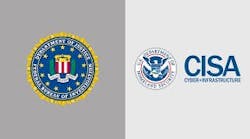Like Dorothy swooping into Oz and proclaiming the Wicked Witch of the West dead, President Obama made a proclamation of his own on the heels of his secretive air-dash to war-torn Afghanistan early this month, declaring that the United States will “finish the job” in the country and was near its goal to defeat al-Qaeda and deny it a chance to rebuild.
Ironically, just hours after the president’s departure from Afghanistan, a series of explosions and gunfire riddled Kabul, killing at least six people. The Taliban claimed responsibility for the attack. I suppose we have eliminated the al-Qaeda threat, but the jury is defintiely still out on the Taliban.
When Obama assumed Office a little more than three years ago, he made it clear from the outset that he rejected George W. Bush’s “war on terror” credo. The new philosophy said: “We will always seek to delegitimize the use of terrorism and to isolate those who carry it out. Yet this is not a global war against a tactic — terrorism — or a religion — Islam.”
Obama said we were at war with a specific network, al-Qaeda, and its terrorist affiliates who support efforts to attack the United States, our allies and partners.
With some global terror experts saying that the al-Qaeda network in the Middle East may be down to as low as 100 to 200 actual fighters, does that mean the world terror threat in general, and the terror threat to the United States in particular, is over? Not by a long shot.
While the war winds down and the strength of traditional al-Qaeda forces dwindle, a very legitimate threat has U.S. law enforcement and government officials on guard — the “lone wolf” terrorist. Tom Sanderson of the Center for Strategic and International Studies recently said that he considers “lone wolves” — individuals working alone to commit acts of terror — a very serious threat, and one that’s not easily addressed.“They have very small signatures,” he said. “They are not easy to spot like you can with a satellite training group in Yemen or northern Mali. They are individuals whose safe haven could simply be their bedroom at their home in Connecticut.”
As the dawn of the 21st century broke, terrorism as viewed from the American perspective was something that happened “over there.” Whether it was the Middle East, Northern Ireland or Africa, violent attacks to American citizens were a blip on the radar. Then came 9/11, which proved a startling reminder that we too are members of the world community.
It is impossible to ignore that terror threats have become more than external headlines. The realization is there are terrorists at work already inside the United States and in Europe who do not like their societies and feel distanced from the cultures where they reside. Thus, focus has shifted from the nightmare of an al-Qaeda invasion to a more realistic threat of “home-grown terrorists,” who usually are disenfranchised young people that work alone, latching on to the twisted al-Qaeda credo and rhetoric without actually being affiliated with the group.
The discussion about homegrown terrorism has morphed into a debate about the “lone wolf” threat. It was American law enforcement agencies that pioneered the construction of a new threat facing Western society — that is, from people referred to by the FBI as HGVEs: homegrown violent extremists.
Over the last decade, the new threat has continued to evolve. Recent headlines detailing the JFK airport plot, Ft. Dix plot, the JIS in California, the Times Square and Christmas Day bombers, the Holocaust Museum shooting and, of course the Ft. Hood shooting all come to mind. And since last July, with the massacre of 77 Norwegians by Anders Behring Breivik, the concept has touched Europe.
“There have been more than 200 terrorist attacks in the United States since 9/11, but what has really increased is the total number of foiled terrorist plots,” says University of Maryland researcher and START (Study of Terrorism and Responses to Terrorism) director Gary LaFree, who has developed the largest and most comprehensive unclassified terrorism database in the world with funding from the U.S. Department of Homeland Security. “Our researchers have tracked over 100 foiled plots in the past decade,” LaFree adds. “Most of these would be classified as homegrown terrorism.”
The lone wolf terrorist is a significant threat to our national security — more than al-Qaeda ever was. It is imperative that law enforcement and security professionals learn how to recognize and deal with the threat.
If you have any comments for Steve Lasky regarding this or any other security industry-related issue, please e-mail him at [email protected].


